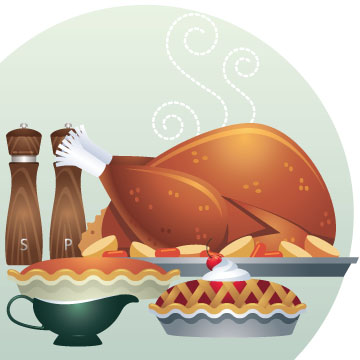Try to trim that extra weight to stave off diabetes
The theme of this year’s National Diabetes Awareness Month, honored every November, focuses on acting against diabetes. Dedicated to educating the public about diabetes, National Diabetes Awareness Month celebrates the progress in diabetes research and promotes healthy changes.
Diabetes affects 38 million Americans, and over three million Canadians. About 1.2 million people are diagnosed with diabetes, every year.
Weight and diabetes typically go hand-in-hand, and echoes the National Institute of Health’s message to establish lifestyle habits that can help prevent diabetes and diabetes-related health issues down the road.
Obese individuals are six times more likely to develop Type 2 diabetes, which occurs when blood glucose or blood sugar is too high. The pancreas makes insulin, which moves glucose to muscles, to use right away or to the liver, to store for later. In those who are overweight or obese, the body can’t move insulin to the correct locations, so the pancreas tries to compensate and wears out.
According to the National Institute of Health, losing five to seven percent of starting weight can delay diabetes or prevent diabetes by about 50 percent. Losing weight may help individuals eliminate the need for diabetes medications or restore blood sugar to an appropriate level.
In addition to getting plenty of exercise and sleep, adopting a low-carb and low-sugar diet can help reduce the risk of diabetes, and help shave off a few pounds.
The following are a few tips to get started to a healthier lifestyle:
• Stick to the perimeter of the grocery store. The outermost edges of most grocery stores have the healthiest items, like fruits and vegetables, whole grains, lean meats, seafood, eggs and low-fat dairy options. One of the best ways to avoid foods high in carbs and sugar, is to stay away from the aisles.
• Watch out for labels; sugar has many names. When purchasing an item, pay attention to its label. Watch for ingredients like sucrose, glucose, fructose, high fructose corn syrup, maltose/hydrolyzed starch, fruit juice, honey and agave nectar. The fewer of these that appear on the label, the better the food is to consume.
• Use a home kitchen. While processed food is easier to prepare, it is high in sugar and carbs. Try to cook from scratch, as often as possible. This doesn’t mean hours need to be spent in the kitchen; even marinating meats and roasting vegetables will benefit the body.
• Snack smart. Salty, savory snacks, like granola bars or chips, will leave one feeling hungry. Eating snacks high in protein and fiber, like cheese, eggs or nuts, will fill the body up, and help watch sugar and carb intake.
• Substitute sweets. Everyone loves soda, cookies and ice cream, but try exchanging soda with seltzer or herbal tea, and desserts with Greek yogurt and fruit. If a person must bake, cut the sugar used in the recipe by half or by a third. And if it’s needed to sweeten meals, use Stevia, cinnamon, vanilla or nutmeg.


